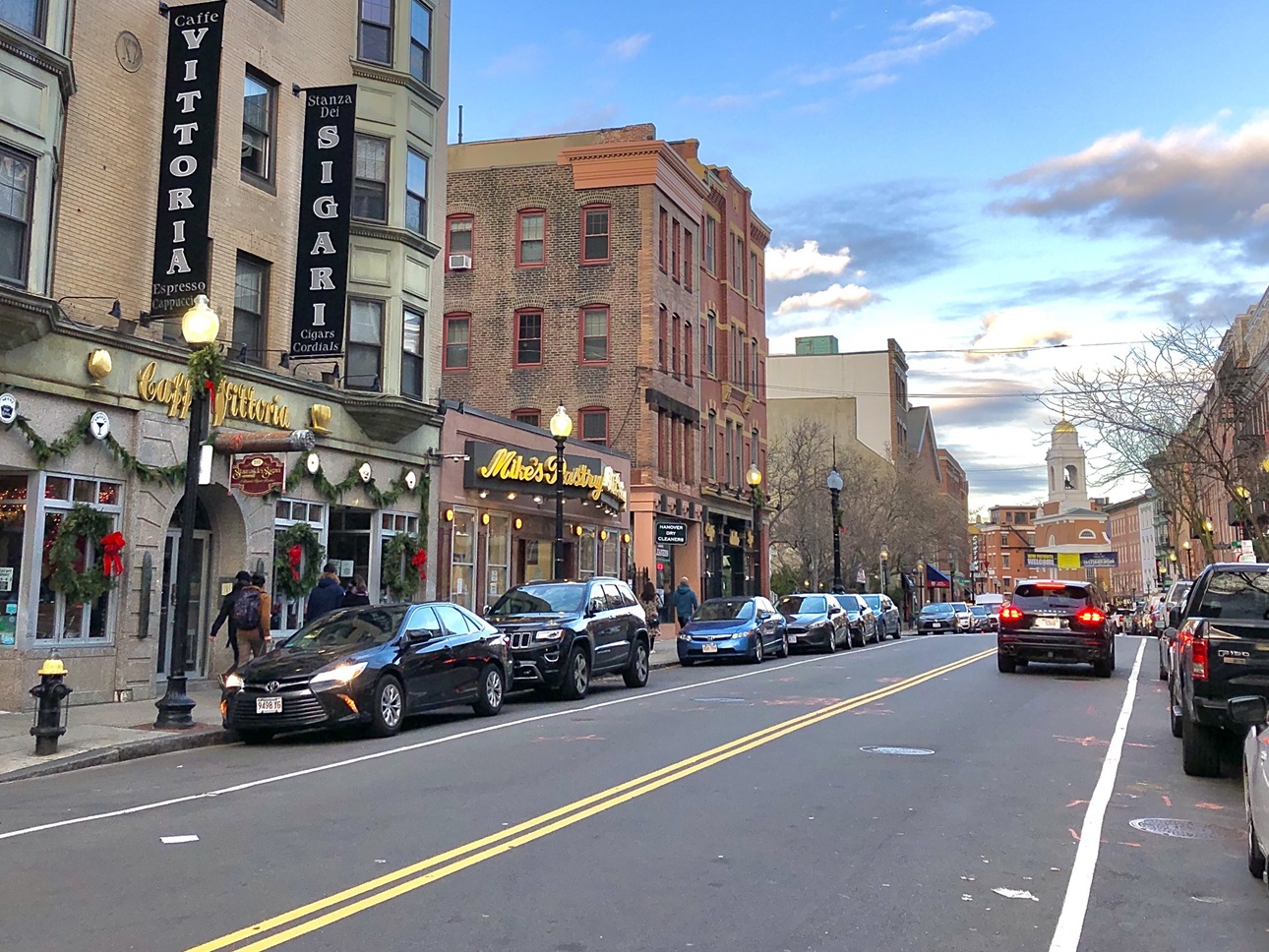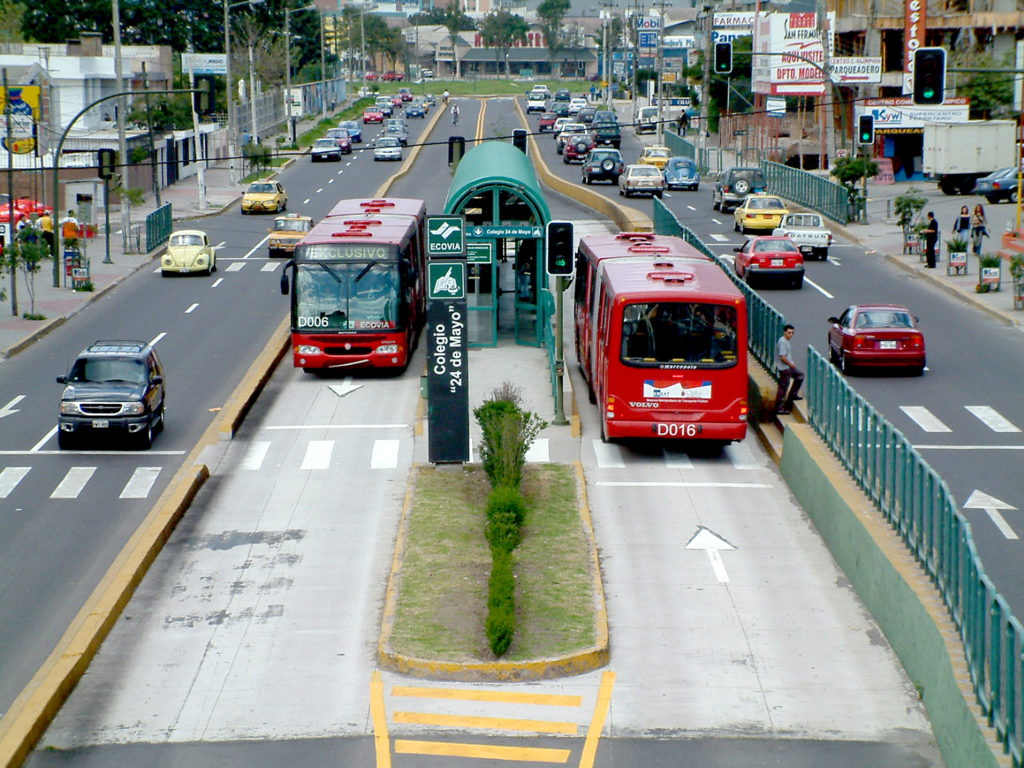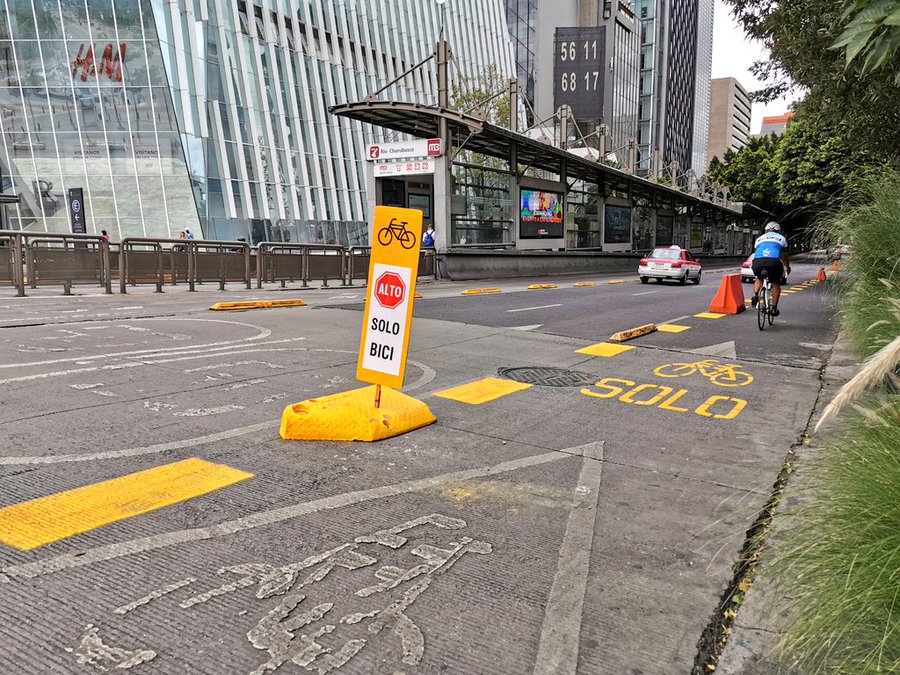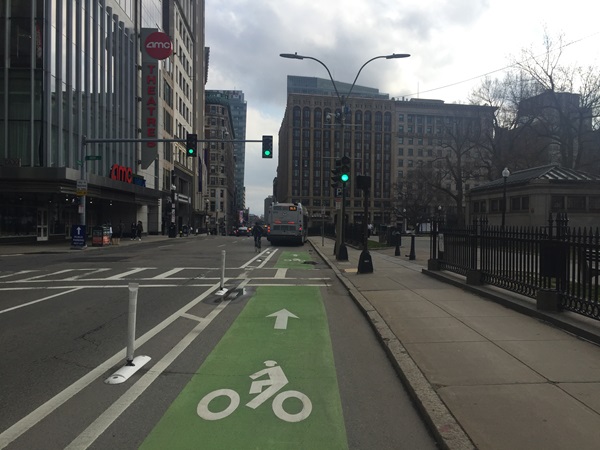Public Transit:
Transform Streets with Dual Side Door Buses
By Julia Wallerce, Boston Program Manager, and Ari Ofsevit, Senior Associate, Institute for Transportation and Development Policy
April 1, 2021
Sometimes, small decisions make big differences, and in unexpected ways. For example, transit agencies in the US typically purchase buses with doors on the right side only. Buses with doors on both sides, however, are becoming more popular nationally, reflecting an outside-the-box thinking that can improve how transit service works. It may seem like a minor change, but it has the potential to transform not only how we operate our transit systems, but how we use the entirety of our streets.
Choosing to procure buses with doors on both sides can enable moving more people more quickly, improve bicycle safety, and expand opportunities for shared streets, greenery and outdoor dining, all of which have surged in both popularity and importance since the COVID-19 pandemic. We have the opportunity here in Greater Boston to unlock these benefits for our region, and if we expand our current focus on improving bus service—via bus rapid transit (BRT) and other priority elements like dedicated bus lanes—to also include improving the bus fleet itself, we can get there even faster.
The dramatic drop in traffic during the pandemic has offered a once-in-a-lifetime opportunity to re-evaluate how space on our streets is allocated, and to see just how much of that space has been gradually ceded to single-occupancy cars that have made our streets, air and cities less safe. Programs like Boston Healthy Street Initiative and MassDOT’s wildly popular Shared Streets grant program have demonstrated how quickly changes like expanding a curb (even with paint) or repurposing a parking space for outdoor dining or parklets can transform a street, and how hungry communities are to implement such changes. At the same time, we’ve seen ridership on buses retained at far higher levels than on the subway or Commuter Rails because buses are carrying people who are essential workers and who rely on transit for their commute and other trips. Never before has the public value of the bus been more critical or more visible, and having doors on both sides would multiply this value, especially in a city with particularly limited street space.


Photos: Hanover Street, before and after, repurposing curbside parking spaces for outdoor dining (credit: Jonathan Berk)
Boston is notorious for its narrow, winding roads that in some cases were built along cow paths but in nearly all cases were built before the era of the automobile. Buses with dual-side doors can offer new flexibility for boarding locations (which take up significant space) and placement of bus lanes. This is because they are not limited to operating on the right side of the road. As a result, street space once occupied by bus boarding zones or even bus lanes can be released for protected bike lanes that are not forced to reckon with merging or boarding buses.
For instance, the Silver Line buses in Downtown Boston operate with right-side doors on narrow, one-way streets in Downtown Boston. This means that on Washington Street, the bus lane and bike lane shift from one side of the road to the other, creating more potential conflicts for these road users. A new bike lane was installed on a highway-like section of Tremont Street, part of a bike lane plan for Downtown Boston that was accelerated by reduced COVID-level traffic. It is mostly a protected facility but has a gap in protection where buses pull to the curb to exchange passengers, increasing conflict and making a two-way bike lane nearly impossible to implement. Buses with doors on the left side would make it feasible to install a bus lane on either side of the street, removing these conflicts entirely to create a safer, more enjoyable experience for both bus riders and cyclists.
Photo: Curbside conflict on Tremont St, Boston between a bus with right side doors only and a cyclist forced to veer into moving traffic during bus boarding (credit: Ari Ofsevit)
In addition to supporting safer cycling and protected bike lanes, buses with left-side doors can facilitate the implementation of center-running bus lanes offering the benefits of bus rapid transit (BRT) that delivers high-quality bus service and also frees up curb space for creative uses. Throughout the pandemic, we have seen the importance of having outdoor areas for pleasure (like parks and parklets) and business (for outdoor dining, which can help keep restaurants afloat when indoor dining is verboten). When buses are equipped exclusively with right-side doors, they are forced to either board at the curb—which precludes center-running service that is unobstructed by curbside conflicts—or board using separate platforms in each direction which can take up nearly twice as much space.


Left: Buses with dual side doors allow for center-running bus rapid transit (BRT) service using a single platform in Quito (photo: Lloyd Wright)
Right: Right side curb space is used for protected bike lane in Mexico City thanks to dual side door buses that accommodate boarding from a left side platform (credit: @Mayaenbici via Twitter)
An illustrative example of where a limited option bus fleet resulted in a compromised street design is on Columbus Avenue in Roxbury and Jamaica Plain, where the region’s first center-running busway was recently created. Because the existing fleet does not have dual-side doors, two boarding platforms were built to accommodate buses traveling in each direction. With dual-side doors, a single platform in the middle would have sufficed, thus reducing the number of stations needed to be built and reserving space for protected bike facilities that were instead omitted entirely. Moving boarding areas away from the curb and onto platforms in the center of the road reduces crossing distances for wide roadways. For BRT, a single platform design leaves space to accommodate outdoor dining (when it’s adjacent to restaurants and business areas), bikeshare hubs, parklets, or even surface parking for cars where it is needed.
Many of the changes to our streets that dual-side door buses enable can also make those streets appear more narrow. However, narrower streets do not necessarily move fewer people, nor are they less safe than wider streets that accommodate more vehicles and speed. In fact, while a single highway lane can move, at most, about 1,500 cars per hour, the total throughput of people is not more than 2,000 or so because most of those cars are carrying just one, maybe two, people. If those one or two thousand people shifted from cars to transit, the capacity to move them quickly would increase exponentially, especially in dual-side door buses traveling in dedicated lanes with all-door boarding and off-board fare collection. Bus lanes with these features can more move people in less space with fewer vehicles.

Photo: In this example, a roadway which once had a streetcar line currently has buses running in mixed traffic along the curbs. This animation shows how a center-island boarding platform would allow more road space to be dedicated to protected bike lanes and outdoor dining (or greenspace).
This concept of procuring buses with dual-side doors is not foreign and is already being embraced by cities nationwide. Spokane, Washington—where the entire transit system carries about as many people as the route 28 bus and Silver Line 4/5 from Mattapan to downtown—recently applied federal grant funding to purchase a dozen new electric buses with dual-side doors at a price point $750,000 less per bus than the T is spending for diesel-powered buses from the same manufacturer with right-side doors only.
If “moving more people in fewer vehicles” is truly a goal we embrace as a Commonwealth, then prioritizing the movement of transit on our streets is imperative. To support public health and economic recovery and make our region more resilient in a post-pandemic era of climate change, we will need to make hard decisions about how our streets are used. Throughput and storage of vehicles can no longer take precedent over the movement and activity of people. The seemingly small decision to deploy buses with dual-side instead of right-side-only doors can help propel us toward these goals safely and expediently while also creating the spaces and places our communities need to thrive.
Read more proposals in the Seizing the Moment series.

